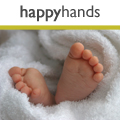Clinic
Breech Presentation
About 3 per cent of babies are breech presentation - that is lying bottom-down (rather than head-down) at term.
It used to mean an automatic caesarean section, but now, as long as other considerations are taken into account, many mothers are allowed a trial of labour and do deliver vaginally successfully. This has to be discussed carefully with your midwife and obstetrician because there are some quite serious considerations about delivering in this way. Also, you probably want to avoid an emergency caesarean section after having laboured away and become completely exhausted.
If, towards the end of your pregnancy your baby seems to be favouring a bottom- first approach, there are some steps you can take to help the baby turn to a head-down position. There isn't much point worrying about which way up your baby is until around 34 weeks, because prior to this there is enough room to move up and back again. If, by 36 weeks, your baby seems to remain in a breech position, you can try the following:
- postural tilting - lie on a firm surface, your bed or the floor, with a two or three cushions under your bottom, your knees bent and your feet flat on the floor. Remain like this for at least ten minutes - use the time to relax and practise your breathing exercises, gently massaging your abdomen - several times a day. This position creates a little more room in the uterus, taking the pressure off the pelvic area, and may allow your baby to turn head down.
- external cephalic version - this can only be attempted by a skilled midwife or doctor, and isn't always successful. Even if the baby is turned, it often turns itself promptly back to its original position.
- acupuncture - midwives trained in acupuncture at the Freedom Fields Hospital in Plymouth, UK, claim a 60-65 per cent success rate at turning breech babies with acupuncture. You will need to find a qualified acupuncturist.
- moxibustion - this is an adjunct of acupuncture, and involves the burning of the herb moxa (chinese for mugwort, which is St John's Wort) over the appropriate acupuncture point on both feet. While this may be recommended by your acupuncturist, it may also be recommended and applied by other alternative practitioners who have training and experience in moxibustion, for example herbalists, Homoeopaths or osteopaths. Moxibustion will need to be applied for 15 minutes, up to 10 times daily.
- homoeopathy - the recommended homoeopathic remedy is Pulsatilla 30, one dose every two hours for up to six doses. This dosage needs to be taken within the course of one day, and then stopped.
Related Articles
First Aid courses from an award winning London based company
Head Injuries - what to do and what to look out for
Have Your Say
Be the first person to comment on this article, just post a comment below.





In order to post a comment you need to be a member. Join Now | Sign in